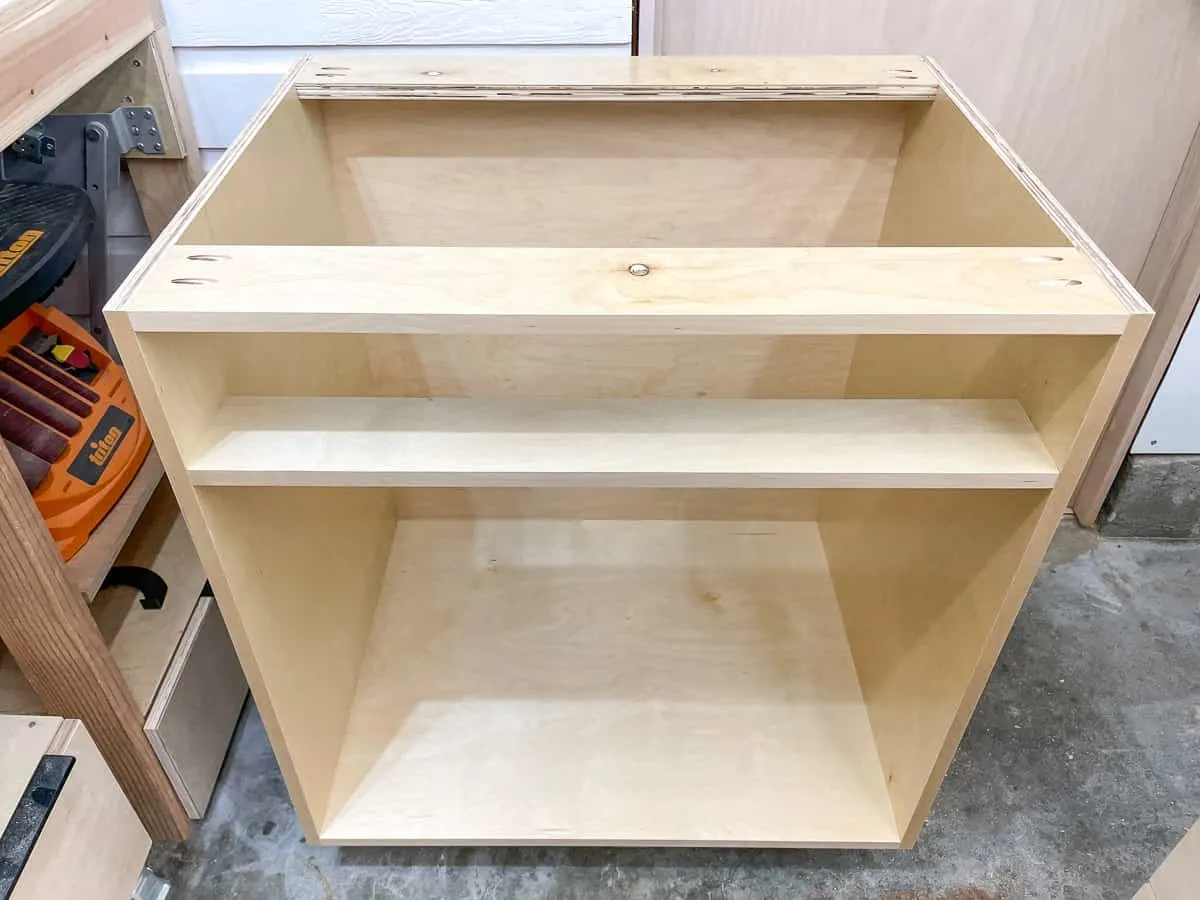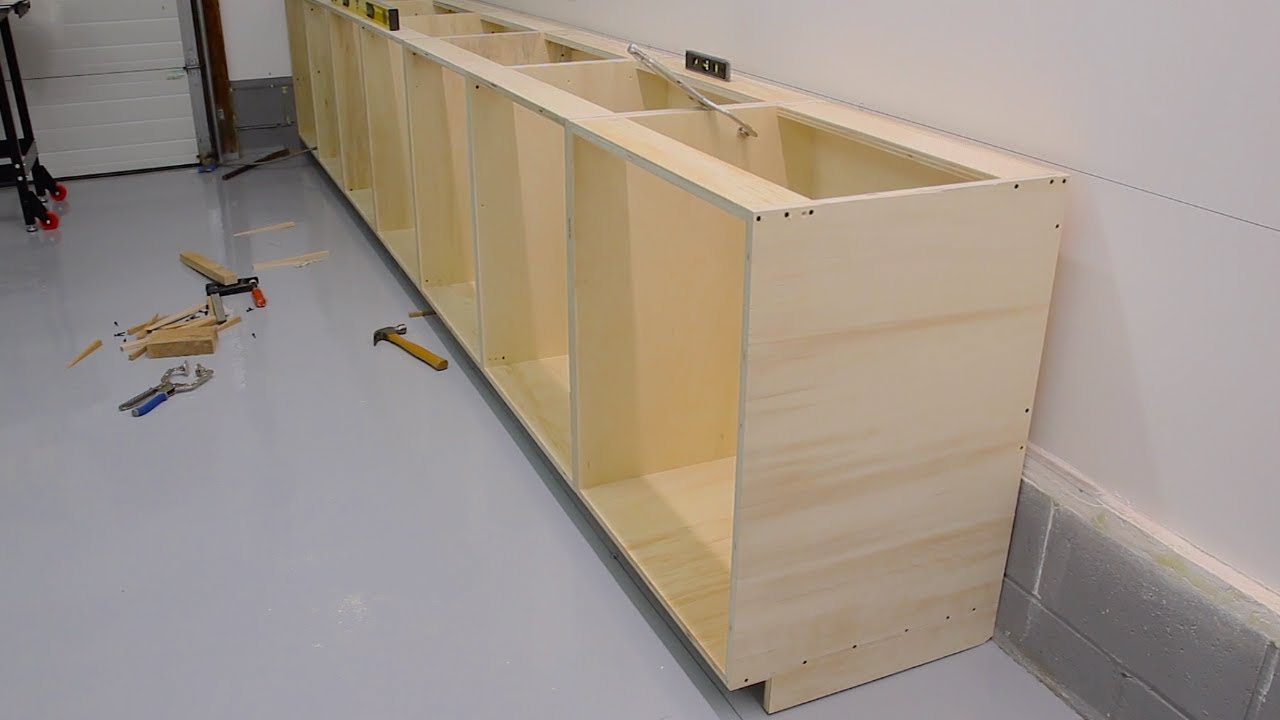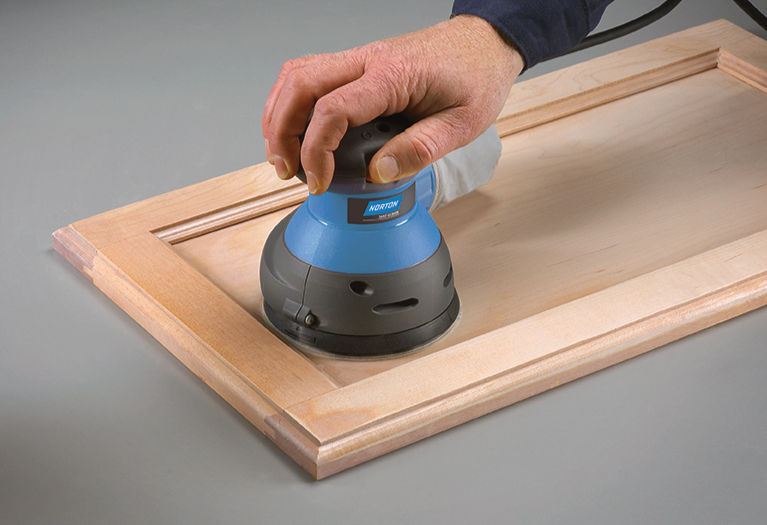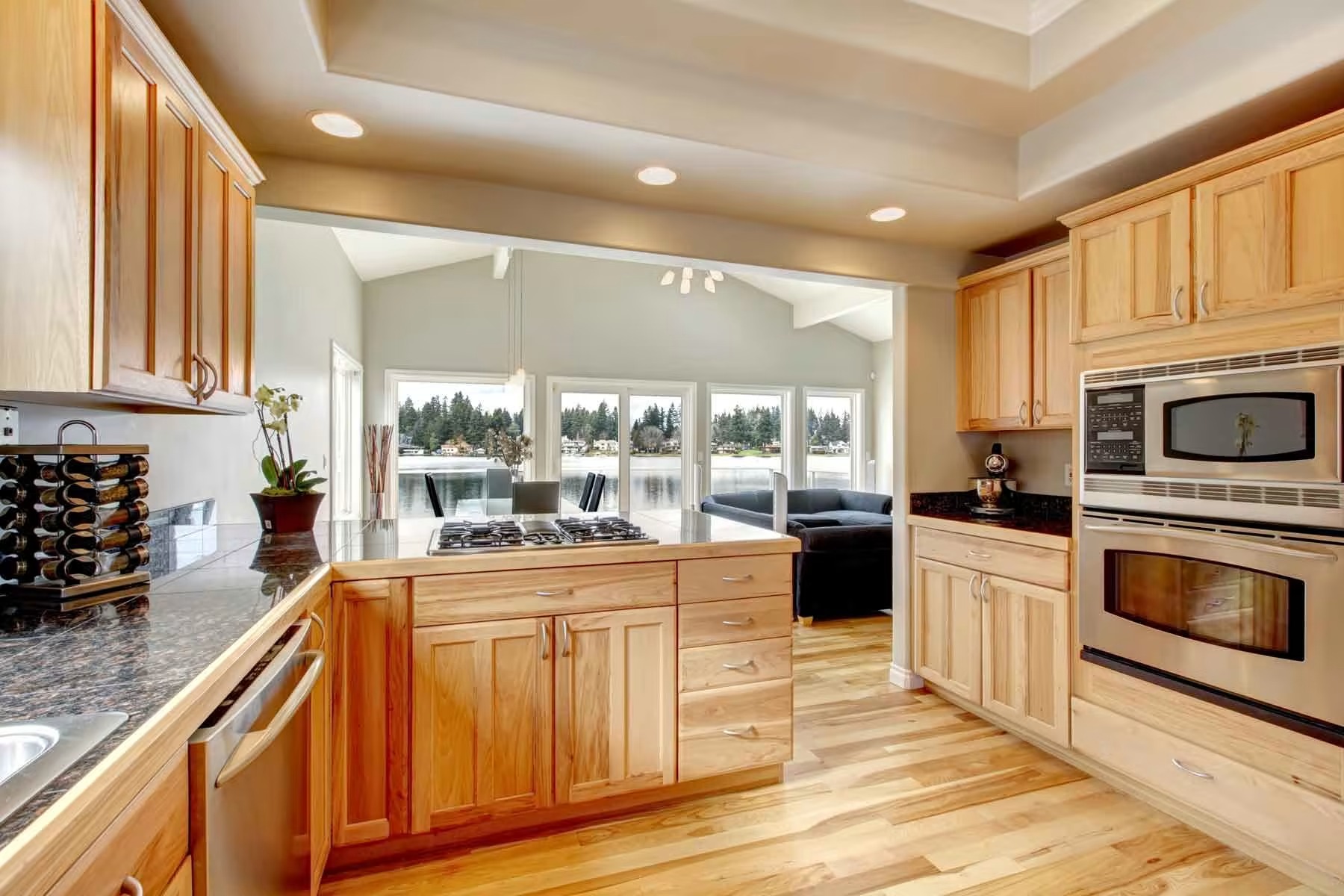Cabinet boxes are the basic building cabinet boxes of many furniture pieces, from kitchen cabinets to bathroom vanities.
They provide the structure and support for your drawers, doors, and shelves. We’ll find the process of crafting your very own cabinet box using clear and easily accessible materials.
We’ll learn everything from selecting the right materials to collecting our cabinet box with some basic tools, inexpensive materials, and a little patience.
You’ll soon have a useful and attractive cabinet box ready for use if you want to clean up your kitchen, bathroom, or any room in your home.
We will learn how to construct a cabinet box that suits your needs. By the end, you’ll have a strong and useful cabinet box ready to be customized to your liking.
So, grab your tools, and let’s begin creating your very own simple cabinet box.
Similar Post: 15 Best Kitchen Cabinet Colours
Materials You Will Need for Building Cabinet Boxes

Before you start crafting your cabinet, make sure you have these things with you.
- Plywood: Pick 3/4-inch thick plywood for the sides, top, and bottom of your cabinet box.
- Saw: To make the plywood sheets the right size, use a table saw or circular saw.
- Screws: Use wood screws to build the cabinet. Just ensure the screws are the right size for your plywood’s thickness.
- Screwdriver or Drill: To put in the screws on the plywood, grab a screwdriver or a drill with a screwdriver tip.
- Measuring Tape: This is important for getting measurements correct.
- Clamps: Grab some clamps to keep the cabinet pieces together while you’re building it.
- Safety Gear: Don’t forget to put on safety glasses and ear protection when you’re using power tools.
Steps to Make a Simple Cabinet Box
Step 1: Measure and Cut the Plywood

Let’s start by determining the parts you need for your cabinet box. You’ll usually have two side pieces: a top piece, a bottom piece, and a back piece. Now, it’s time to cut them out.
Grab your saw, which is a big, sharp tool for cutting wood, and follow the lines you drew on the wood. Try to cut carefully and accurately so the pieces fit together nicely, like building blocks.
To summarize, plan your parts, mark your cutting lines, and use your saw to make those cuts. Then, you’ll be all set to put your building cabinet boxes together.
Also Read: 10 Stylish and Functional Couch with Storage in 2023
Step 2: Assemble the Box

Place the parts in a box shape on a flat surface. Think of the two side panels as the box’s sides. They should be running side by side. The top and bottom pieces become the box’s cover and base.
Slide the back piece against the back edges of the side, top, and bottom parts. To hold everything together, use small spring clamps. Before moving forward, check that everything is straight and level.
This ensures your box will come out just right and seem nice. Taking a moment to make sure everything lines up properly will save you from any problems later.
Step 3: Attach the Panels

To start making a fit cabinet box, first, pick one of the side pieces. You’ll need a drill to make small holes, and then use self-tapping screws to connect it to the top and bottom parts.
Do the same thing for the other side piece. These building cabinet boxes create the main frame of your cabinet. Next, attach the back piece by screwing it onto the side, top, and bottom parts of the frame.
Make sure it lines up perfectly with the edges of the frame for a better appearance. By following these easy steps, you’ll have a tough cabinet box ready to go.
This frame acts as the base for your cabinet, providing the support you need for adding shelves, doors, or any other custom features you want.
With these instructions, you’re on your way to building a practical and good-looking cabinet.
Step 4: Check for Squareness

To check if your cabinet is square, follow these effortless steps. First, use a measuring tape to measure from one corner to the corner across from it.
Then, do the same for the other two corners. If all three measurements are the same length, your building cabinet boxes are square and good to go.
Just adjust the panels until they’re all even, and you’ll have a square cabinet that fits perfectly in your space.
Step 5: Add Additional Support

If you’ve got a big cabinet, you might want to make it stronger. There are two easy ways to do that. First, you can make it more stable by attaching small pieces of plywood to the corners inside the cabinet.
This building cabinet box stops it from wobbling. Just use screws or hardware long nails to hold the plywood in place. Another way is to put a hard piece of wood or something like that in the middle of the cabinet.
This spreads out the weight of the things inside and keeps the cabinet from shaking or falling apart.
So, if you pick the plywood for the corners or a centerpiece, these plain steps will give your big cabinet the strength it needs.
See More: Price Per Square Foot to Build a House by Zip Code
Step 6: Sand and Finish

To make your cabinet box view great and last a long time, follow these clear steps. First, get some sandpaper and gently rub it on the edges and surfaces of the cabinet box.
This will remove any rough spots or splinters and make it feel smooth. Once your cabinet box is smooth, it’s time to give it some style and protection. You have a few choices here.
If you want to add color, use paint. Just pick your favorite color and put on a couple of coats until it looks wonderful. If you like the natural wood spot, use a wood stain.
It will make the wood better and keep it safe at the same time. Lastly, you can use a clear sealant. This will protect the wood from water and scratches while showing off its natural beauty.
So, if you want color or a natural spot, sanding and finishing your building cabinet boxes is a plain and rewarding project.
Simple Tips for Ideal Cabinets

1. Accurate Measurements are Key
Before you start picking materials and how to build things, the first thing is to get your measurements right. Look carefully at the space for your cabinets.
Check for any bumps or uneven spots in the walls or floor because even small differences can mess up how your cabinets fit. Measure twice to avoid mistakes.
Getting your measurements right is important for your cabinet project. Measure how wide, tall, and deep the space is. If your space isn’t perfectly square or level, watch out for uneven parts.
Cabinets have to fit perfectly, and even small differences can cause problems later. So, grab your tape measure, take it slow, and you’ll have building cabinet boxes that fit just right.
2. Choose Quality Materials
The materials you pick for your cabinet boxes are important. They decide how fit and nice your building cabinet boxes will be.
Many people like plywood and real wood because they are hard and can be used in many ways. Plywood is fantastic at staying flat and works well for cabinets.
If you’re thinking about your budget and how you want your cabinets to view, you might also think about using engineered wood or MDF (medium-density fiberboard).
But remember that they might not last as long as plywood or real wood. So, you need to decide what’s most important to you, how long they’ll last or how they look.
3. Consider Cabinet Box Construction Methods
When making cabinets, you have two main ways to go frameless (like in Europe) and face frames. Frameless cabinets seem modern and give you more space inside.
Face frame cabinets have a classic look and give extra support. Just pick the one that matches your style and needs.
So, if you like the modern style with lots of space or the classic appearance with added support, choose the cabinet-making way that suits you best. It’s your building cabinet boxes, your call.
4. Invest in Quality Hardware
When you’re setting up your cabinets, it’s important to pick the right things. Soft-close hinges and slides aren’t just for making things easier.
They also keep your cabinets from wearing out too quickly. And those knobs and handles? They don’t just look amazing. They make opening and closing the cabinets easy.
So, don’t forget that the things you choose for your cabinets make a big difference in how well they work and how they spot. Go for the good things, and your building cabinet boxes will stay in great shape for a long time.
Related: Sofa and Couch Dimensions: All You Need to Know
5. Plan for Adequate Storage
When you’re building a cabinet, think about what you want to store in it. Plan how to use the space well. You can add shelves that slide, trays that spin, and other clever storage ideas to make everything fit nicely.
These smart ideas will help you keep your things clean and use all the space in your cabinet. So, when you’re designing your cabinet, what you need to store and use these tips to make it work better.
It’s all about making your life easier and more organized with a cabinet that suits your storage needs. So, get creative and build building cabinet boxes that help you keep things tidy.
6. Pay Attention to Joinery
How you assemble your cabinet boxes matters for how strong and sturdy they’ll be. There are three common ways people use dovetail joints, dowels, and pocket screws.
To pick the right one, think about your skills and the tools you have. Dovetail joints are a bit tricky and need more skill, while wooden dowels are simpler to use.
Pocket screws are easy and make a tough connection. So, choose the way that matches what you’re perfect at and the tools you’ve got.
This will keep your building cabinet boxes solid and safe for a long time, and you won’t have any trouble with them.
7. Ensure Proper Installation
When you’re putting up your cabinets. It’s important to do it right, even if they’re well-made. First, use a level to ensure your cabinets are straight up and down.
This means they should be standing tall and not leaning sideways. Next, attach your cabinets to the wall using tough screws.
This keeps them firmly in place and prevents them from falling. Lastly, connect the cabinets with the right kind of hardware. This makes them stable and stops them from wobbling or moving around.
8. Regular Maintenance
Once your cabinets are all set up. It’s important to keep them in good condition. If there are any spills, clean them immediately, using mild cleaners to avoid harming your cabinets.
Now and then, check the hardware and see if anything is loose or seems old. This way, you can keep your cabinets looking nice and working well for many years.
By keeping them in good shape, you’re making sure the money you spent on those lovely cabinet boxes stays worthwhile. This means your kitchen or storage space will remain both good-looking and useful for a long time to come.
Conclusion
Creating a basic cabinet box is a simple DIY project that anyone can complete with just a few important tools and materials.
We learned everything from measuring and cutting your plywood pieces to collecting them into a strong box. Don’t forget to take your time and double-check your measurements to ensure an exact fit.
By following the provided instructions and using clear and easy steps, you can easily complete this project.
Once your cabinet box is collected, you can customize it with paint or stain to match your decor or add knobs and handles for a useful and attractive touch.
This flexible cabinet box can be used in various rooms throughout your home, providing valuable storage space for your things.
Creating a plain cabinet box is an excellent way to develop your DIY skills while improving the use of your living spaces.
So, gather your materials, follow the steps, and enjoy the building cabinet boxes, a practical piece of furniture for your home.
Check This Next: 13 Stunning White Oak Cabinets for Your Dream Home


